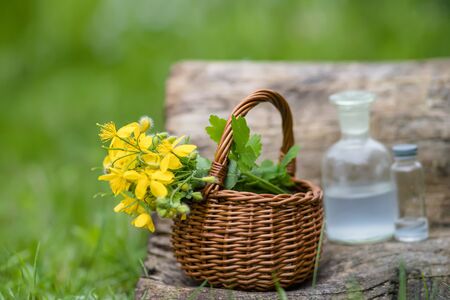1. Introduction to Growing Cut Flowers at Home
There’s something truly special about walking into your backyard, snipping a few fresh blooms, and arranging them in a vase on your kitchen table. Growing cut flowers at home isnt just about having beautiful bouquets—it’s also an enjoyable hobby that brings nature closer to your everyday life.
Whether youre a gardening newbie or already have a green thumb, growing your own cut flowers is one of the most rewarding things you can do in your backyard garden. Its cost-effective, offers endless creative opportunities, and adds seasonal beauty to your home throughout the year.
Why Grow Your Own Cut Flowers?
Here are some great reasons why more people are turning part of their garden space into a flower-cutting paradise:
| Benefit | Description |
|---|---|
| Cost-Effective | A single packet of seeds can produce dozens—even hundreds—of blooms over the season. |
| Freshness | You’ll always have fresh flowers that last longer than store-bought ones. |
| Creative Expression | Create your own arrangements for holidays, parties, or just because! |
| Sustainability | No need for plastic wrapping or long-distance shipping—just walk outside and pick what you need. |
| Pollinator Friendly | Many cut flowers attract bees, butterflies, and hummingbirds to your garden. |
Perfect for All Garden Sizes
You don’t need acres of land to grow cut flowers. Many varieties thrive in small raised beds, containers, or even along the edge of a vegetable garden. With thoughtful planning, you can enjoy continuous blooms from early spring through late fall.
Seasonal Color Right at Your Fingertips
Growing your own cut flowers lets you enjoy the changing seasons in a more personal way. From cheerful tulips in spring to bold sunflowers in summer and rich dahlias in fall, you’ll always have something beautiful to bring indoors.
Ready to Get Started?
In the next sections, we’ll take a look at the top 20 cut flowers that are easy to grow in American backyards—no matter your climate zone or skill level. Let’s dig in and start planning your very own cutting garden!
2. Essential Tips for a Thriving Cut Flower Garden
If youre planning to grow the top 20 cut flowers in your backyard garden, giving your plants the right care is key to getting beautiful, long-lasting blooms. From preparing the soil to making sure your flowers have enough sunlight and water, here are some must-know tips that will help your garden thrive.
Soil Preparation
Healthy soil is the foundation of any successful flower garden. Most cut flowers prefer well-drained, fertile soil rich in organic matter. Before planting, loosen the soil to a depth of at least 12 inches and mix in compost or aged manure to improve texture and fertility.
Recommended Soil Conditions for Popular Cut Flowers
| Flower | Soil Type | pH Range |
|---|---|---|
| Zinnias | Well-drained, loamy | 5.5 – 7.5 |
| Sunflowers | Sandy to loamy | 6.0 – 7.5 |
| Dahlias | Rich, well-drained | 6.5 – 7.0 |
| Snapdragons | Moist, well-drained | 6.2 – 7.0 |
Sun Exposure
Most popular cut flowers need full sun—at least 6 to 8 hours of direct sunlight daily—to produce strong stems and vibrant blooms. Be sure to choose a spot in your yard that gets plenty of sunlight throughout the day.
Watering Needs
Consistent watering is important, especially when flowers are budding or blooming. Avoid overhead watering when possible, as wet foliage can lead to disease. Instead, use drip irrigation or water at the base of the plants.
General Watering Guidelines for Cut Flowers
| Flower Type | Watering Frequency |
|---|---|
| Zinnias & Cosmos | 1–2 times per week (deep watering) |
| Dahlias & Snapdragons | 2–3 times per week during bloom season |
| Sunflowers & Marigolds | Weekly or as needed depending on rainfall |
Succession Planting for Continuous Blooms
If you want fresh flowers all season long, plan on succession planting—sowing seeds every two to three weeks. This keeps new plants growing while older ones are fading out, giving you a steady supply of cut flowers for arrangements and bouquets.
Example Succession Planting Schedule for Summer Blooms
| Date Range | Crops to Sow | ||||||||||||||||||||||||||||||||||||||||||||||||||||||||||||||||||||||||||||||||||||||||||||||||||||||||||||||||||||||||||||||||||||||||||||
|---|---|---|---|---|---|---|---|---|---|---|---|---|---|---|---|---|---|---|---|---|---|---|---|---|---|---|---|---|---|---|---|---|---|---|---|---|---|---|---|---|---|---|---|---|---|---|---|---|---|---|---|---|---|---|---|---|---|---|---|---|---|---|---|---|---|---|---|---|---|---|---|---|---|---|---|---|---|---|---|---|---|---|---|---|---|---|---|---|---|---|---|---|---|---|---|---|---|---|---|---|---|---|---|---|---|---|---|---|---|---|---|---|---|---|---|---|---|---|---|---|---|---|---|---|---|---|---|---|---|---|---|---|---|---|---|---|---|---|---|---|---|
| Late April – Early May | Zinnias, Cosmos, Sunflowers (Early Varieties) | ||||||||||||||||||||||||||||||||||||||||||||||||||||||||||||||||||||||||||||||||||||||||||||||||||||||||||||||||||||||||||||||||||||||||||||
| Mid May – Early June | Zinnias, Snapdragons, Celosia, Marigolds | ||||||||||||||||||||||||||||||||||||||||||||||||||||||||||||||||||||||||||||||||||||||||||||||||||||||||||||||||||||||||||||||||||||||||||||
| Late June – Early July | Zinnias (Late Varieties), Sunflowers (Late Varieties) |
| Flower | Why Its Great for Cutting | Bloom Season |
|---|---|---|
| Roses | Long-lasting, fragrant, and elegant | Spring to Fall |
| Peonies | Large, lush blooms with romantic appeal | Late Spring to Early Summer |
| Lilies | Bold color and strong stems make them ideal for vases | Summer |
| Dahlias | A wide range of sizes and colors; blooms until frost | Mid-Summer to Fall |
| Tulips | Crisp, clean shapes that add elegance to spring arrangements | Spring |
🌸 Easy Growers for Beginners
If youre new to gardening or want low-maintenance blooms, these flowers are great choices. They grow quickly and produce lots of stems perfect for cutting.
| Flower | Why Its Great for Cutting | Bloom Season |
|---|---|---|
| Zinnias | Fast-growing with vibrant colors and long vase life | Summer to Frost |
| Cosmos | Dainty flowers on tall stems; self-seeding annuals | Summer to Fall |
| Sunflowers | Dramatic focal flower; attracts pollinators too! | Summer to Early Fall |
| Marigolds | Tough, cheerful blooms that repel pests in the garden | Summer to Fall |
| Snapdragons | Add vertical interest and come in many colors | Spring and Fall (cool weather) |
🌿 Unique & Specialty Blooms
If you want something a little different or love making artistic floral designs, these flowers offer unique shapes, textures, or scents.
| Flower | Why Its Great for Cutting | Bloom Season | |||||||||||||||||||||||||||||||||||||||||||||||||||||||||||||||||||||||||||||||||||||||||||||||
|---|---|---|---|---|---|---|---|---|---|---|---|---|---|---|---|---|---|---|---|---|---|---|---|---|---|---|---|---|---|---|---|---|---|---|---|---|---|---|---|---|---|---|---|---|---|---|---|---|---|---|---|---|---|---|---|---|---|---|---|---|---|---|---|---|---|---|---|---|---|---|---|---|---|---|---|---|---|---|---|---|---|---|---|---|---|---|---|---|---|---|---|---|---|---|---|---|---|
| Larkspur | Tall spikes with delicate blossoms; adds height to arrangements | Late Spring to Early Summer | |||||||||||||||||||||||||||||||||||||||||||||||||||||||||||||||||||||||||||||||||||||||||||||||
| Bells of Ireland | 4. Harvesting and Caring for Your Cut Flowers
| Flower | When to Harvest |
|---|---|
| Zinnias | When petals are fully open and stem feels firm |
| Sunflowers | When first few petals start to lift off the face |
| Dahlias | When blooms are fully open (they don’t continue opening after cutting) |
| Cosmos | When buds just begin to open |
| Snapdragons | When bottom third of flowers are open |
How to Cut Flowers Properly
- Use sharp, clean scissors or garden snips to avoid damaging stems.
- Cut stems at a 45-degree angle to allow better water uptake.
- Immediately place stems into a bucket of lukewarm water after cutting.
Conditioning Your Cut Flowers
Conditioning is the process of preparing your flowers for arrangement and helps them last longer. Here’s how:
- Remove lower leaves: Strip off any foliage that will be below the waterline in your vase.
- Re-cut stems: Once inside, re-cut stems under running water or submerged in water to prevent air bubbles from blocking uptake.
- Use flower food: Mix commercial flower preservative into vase water if available, or make your own with sugar and a drop of bleach.
- Let them rest: Place conditioned flowers in a cool, dark room for a few hours before arranging them.
Tips for Longer Vase Life
- Change water every two days: Fresh water prevents bacteria buildup.
- Avoid direct sunlight and heat: Keep arrangements away from windows, heaters, or appliances.
- Trim stems regularly: Every couple of days, re-cut the ends to improve water absorption.
- Remove wilted blooms promptly: This keeps your bouquet looking fresh and avoids spreading decay.
Caring for Popular Backyard Cut Flowers
| Flower | Caring Tip |
|---|---|
| Lilies | Remove pollen-covered anthers to avoid staining and extend bloom life. |
| Scented Geraniums | Mist leaves daily to keep foliage looking fresh. |
| Echinacea (Coneflower) | Add a drop of bleach to vase water to prevent cloudiness. |
| Ageratum (Flossflower) | Avoid overcrowding in the vase; needs good air circulation. |
With these simple harvesting and care techniques, you can enjoy vibrant, long-lasting bouquets straight from your backyard garden.
5. Design Ideas and Seasonal Arrangements
One of the best parts about growing your own cut flowers is getting to bring that natural beauty indoors. Whether youre creating a cheerful spring bouquet or a cozy autumn centerpiece, combining flowers from your backyard can make any space feel special. Here are some simple and seasonal arrangement ideas using the top 20 cut flowers from your garden.
Spring Arrangements
Spring is all about freshness, soft colors, and new beginnings. Use early bloomers like tulips, daffodils, and ranunculus to create light and airy bouquets.
| Flowers | Colors | Design Tip |
|---|---|---|
| Tulips, Daffodils, Ranunculus | Pastels (pink, yellow, white) | Mix with greenery like eucalyptus for a fresh look |
| Anemones, Snapdragons | Bold accents (purple, red) | Add height and contrast to pastel arrangements |
Summer Bouquets
Summer brings bright colors and big blooms. Sunflowers, zinnias, cosmos, and dahlias shine during this season. Its the perfect time to go bold with your designs.
| Flowers | Colors | Design Tip |
|---|---|---|
| Zinnias, Dahlias, Sunflowers | Vibrant hues (orange, red, yellow) | Use contrasting colors for a cheerful vibe |
| Coneflowers, Black-eyed Susans | Purple & gold tones | Create rustic-inspired arrangements in mason jars or tin cans |
Fall Centerpieces
As temperatures cool down, shift to warm tones and textured elements. Think marigolds, chrysanthemums, and ornamental grasses.
| Flowers | Colors | Design Tip |
|---|---|---|
| Marigolds, Chrysanthemums, Celosia | Burgundy, orange, deep yellow | Add dried elements like wheat stalks for texture |
| Dahlias (late bloomers), Rudbeckia | Earth tones & jewel colors | Create low centerpieces for fall dinners or Thanksgiving tablescapes |
Winter Displays
You can still enjoy flower displays in winter by drying summer blooms or growing cool-season favorites indoors. Try incorporating evergreens and berries for a festive touch.
| Flowers/Elements | Colors | Design Tip |
|---|---|---|
| Dried lavender, strawflower, statice | Purple, cream, faded pinks | Arrange in ceramic vases or hang as wall décor bundles |
| Pine branches, holly berries, paperwhites (forced bulbs) | Green & red with white highlights | Add candles or ribbon for holiday flair |
Quick Tips for Stunning Arrangements Year-Round:
- Mix textures: Combine soft petals with spiky or grassy greens.
- Add filler plants: Herbs like rosemary or mint add scent and volume.
- Cut in the morning: Harvest when it’s cool to keep blooms fresh longer.
- Avoid overcrowding: Let each flower have room to shine.
No matter the season, your backyard garden offers endless inspiration for floral creativity. With just a few simple tips and a mix of your favorite cut flowers from our top 20 list, you can enjoy the beauty of nature right inside your home all year long.
6. Troubleshooting Common Cut Flower Growing Challenges
Even the most beautiful backyard cut flower garden can face a few bumps along the way. Whether you’re growing zinnias, dahlias, or cosmos, it’s normal to run into issues like pests, diseases, or extreme weather. Here’s how to identify and fix some of the most common problems so your blooms stay healthy and vibrant.
Pest Problems
Insects love flowers just as much as we do—but not in a good way. Some pests chew on leaves and petals, while others suck sap from stems. Heres a quick guide to help you spot and manage common pests:
| Pest | Signs of Damage | Solution |
|---|---|---|
| Aphids | Sticky residue, curled leaves, clusters of tiny bugs on stems | Spray with insecticidal soap or use ladybugs for natural control |
| Japanese Beetles | Skeletonized leaves, chewed petals | Handpick early in the morning; use neem oil spray |
| Thrips | Silvery streaks on petals, distorted buds | Use blue sticky traps or insecticidal soap spray |
| Caterpillars | Holes in leaves and blooms | Pick off by hand; apply Bacillus thuringiensis (Bt) |
Fungal Diseases
Damp conditions and poor airflow can lead to fungal infections that quickly ruin your flower crop. Keep an eye out for these common diseases:
| Disease | Symptoms | Prevention & Treatment |
|---|---|---|
| Powdery Mildew | White powdery coating on leaves and stems | Improve air circulation; avoid overhead watering; apply sulfur-based fungicide if needed |
| Botrytis (Gray Mold) | Brown spots on petals, fuzzy gray mold on buds and foliage | Remove infected parts; keep plants dry; use copper fungicide if necessary |
| Rust | Orange or yellow pustules on undersides of leaves | Remove affected leaves; water at base of plant; apply fungicide if outbreak is severe |
Weather-Related Stress
The weather can be unpredictable, especially in various parts of the U.S. From hot summers to sudden frosts, here’s how to help your cut flowers adapt:
Drought or Heat Stress
- Water deeply and consistently in the early morning or evening.
- Add mulch around plants to retain soil moisture.
- Provide shade cloth during extreme heat waves.
Heavy Rain or Flooding
- Avoid planting in low areas where water collects.
- Add compost to improve drainage.
- If plants are waterlogged, remove damaged stems to prevent rot.
Late Spring Frosts or Early Fall Freezes
- Watch local weather forecasts closely during transition seasons.
- Cover plants with frost cloths overnight when temps drop suddenly.
- Select hardy varieties that tolerate cooler temperatures if frost is common in your area.
Nutrient Deficiencies & Soil Issues
Your flowers might be struggling simply because they aren’t getting what they need from the soil. Heres what to look out for:
| Deficiency | Symptoms | Fixes |
|---|---|---|
| Nitrogen Deficiency | Pale green or yellowing lower leaves; slow growth | Add composted manure or fish emulsion fertilizer |
| Phosphorus Deficiency | Purple-tinged leaves; weak stems and few blooms | Add bone meal or a balanced organic fertilizer with phosphorus (P) |
| Poor Soil Drainage | Mushy roots, yellowing leaves, stunted growth after rainstorms | Aerate soil; amend with compost and sand for better drainage; consider raised beds for future planting |
General Tips for Healthy Cut Flowers All Season Long:
- Select disease-resistant varieties whenever possible.
- Rotate flower crops each year to reduce soil-borne disease buildup.
- Avoid overcrowding—good spacing allows air flow and reduces fungus risk.
- Inspect plants weekly for signs of trouble so you can act fast.
- Certain companion plants like marigolds can help repel pests naturally.
Tackling these challenges head-on will keep your backyard flower garden blooming beautifully all season long!


